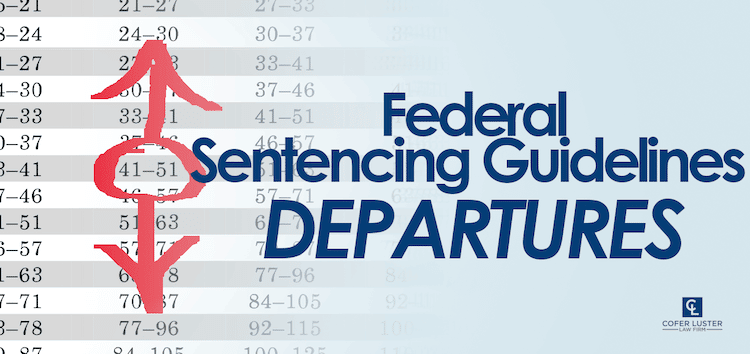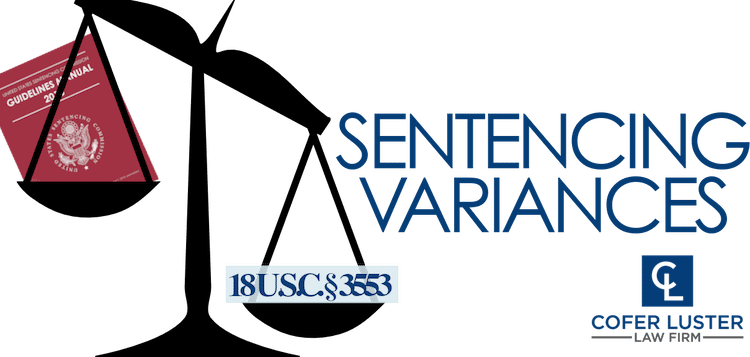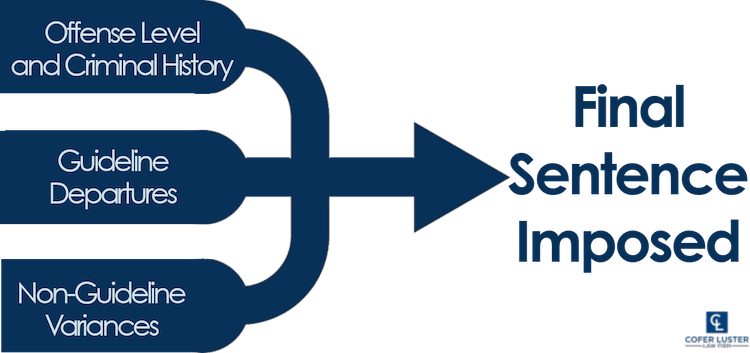Departures and Variances in Federal Sentencing
Other than a very few exceptions, during federal sentencing, the judge may consider any information concerning the background, character, and conduct of the client being sentenced. The United States Sentencing Guidelines (U.S. sentencing guidelines) are important, and the judge must properly calculate the Guidelines range. But a court may impose a sentence outside the otherwise-properly-calculated guideline range through either a “departure” or a “variance.” A federal sentencing attorney should be intimately familiar with current law related to departures and variances. And lawyers should always be trying to push the envelope to have the court consider different and alternative arguments for departure from the Federal Guidelines.
It is important to understand the differences between departures and variances. Technically a sentence imposed pursuant to a departure (rather than a variance) is a “guidelines sentence.” A variance is a sentence that is neither within the applicable Guideline range nor imposed pursuant to the departure provision in the Guideline. Often, even attorneys do not distinguish between the two types of sentences, but the distinction can become important for many reasons, including appellate review.

What is a sentencing Departure?
A sentencing departure is a sentence that is higher or lower than the range called for by the calculations of the Sentencing Guidelines, and is based on a provision of the Federal Sentencing Guidelines that allows for a non-Guideline sentence. Many departure provisions are contained in Chapter 5 of the USSG Manual, but other bases departures may be found throughout the Guidelines. A departure may be achieved by: changing the Offense Level; changing the Criminal History Category; or increasing or lowering the sentence without reference to the Sentencing Table.

What is a sentencing Variance?
A variant sentence or “variance” is a sentence imposed outside the applicable guideline range based upon the statutory sentencing factors found at 18 U.S.C. § 3553(a). These variances may be granted for reasons not identified in the Guidelines or even for reasons the Guidelines say are not permissible for the judge to consider.
A variance may be based on the nature and circumstances of the offense and the history and characteristics of the client. This could include a closer look at a client’s criminal history. Perhaps the Criminal History Score paints an unfair picture of a client’s criminal history. The court may find a client does not fit the profile of the typical offender. For instance, the client may have no history of substance abuse, no interpersonal instability, and is motivated and intelligent. A client’s support system can be a factor in deciding if someone is more likely to reoffend. These arguments are only limited by the effort and imagination of a federal defense lawyer.
The judge is supposed to balance a client’s specific characteristics with other sentencing considerations. The court will also consider how the sentence reflects the seriousness of the specific crime, and how a sentence will promote respect for the law. A judge is bound to “provide just punishment” for the specific crime. A sentence must be harsh enough to deter future to criminal conduct and protect the public from further crimes of the client.
In this mix, the judge must consider whether a sentence can provide the client with needed educational or vocational training, medical care, or other correctional treatment in the most effective manner. To accomplish all of these goals, the judge considers all kinds of sentences available.

How do departures and variances fit into federal sentencing?
The United States Supreme Court set out a three-step process that a federal sentencing court must follow. First, the judge must properly calculate the Guideline range. Second, the judge must decide whether to apply any of the Guidelines’ departure policy statements to increase or decrease the sentence. Third, the judge must consider all the factors set forth in 18 U.S.C. § 3553(a) as a whole, including whether a variance is warranted.
A federal sentencing attorney addresses the Guideline calculations through litigating objections to the Presentence Report. Departures are addressed through a motion requesting a departure or facilitating the Government’s motion. Finally, a variance comes about by the attorney filing a motion or memorandum, presenting mitigating information to the court, and making a compelling sentencing argument at the final hearing. If you are facing federal sentencing, your lawyer should be fighting on all of these fronts defending you by making the best use of Departures and Variances in Federal Sentencing.


